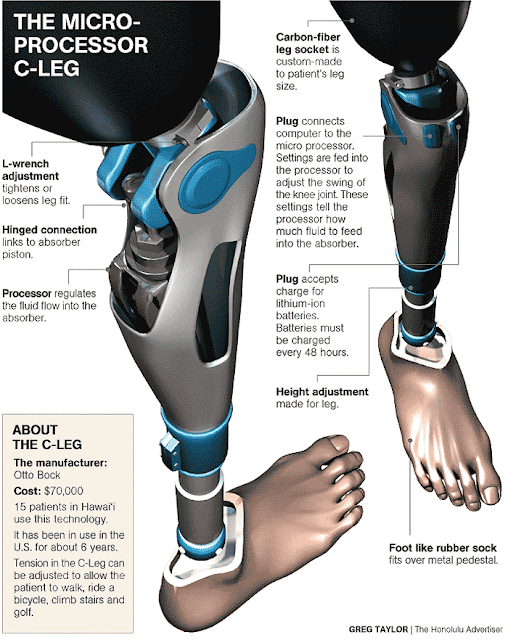It is time to stop the hypocrisies on this planet and pull all together rowing towards a common goal. We are wasting precious time to settle scores that are deep forgotten and only old haters ignorant haters can remember.
On this planet we spend so mush on military defense to protect against the very same people we buy fossil fuels. The US has oil companies dealing with Iran over oil wells, for example, yet they spend so many billions in building and maintaining an army for futile wars.
This civilization must depose the old warlords and start with a fresh new young generation of politicians that will modernize every continent. John Kennedy was a marvelous example of leadership with fresh ideas who helped America to go to the Moon.
 Yes, there was the cold war and yes, there was pressure among each military side, but mankind managed to reach another surface and safely land on it. We send astronauts and probes in space to build the path for a better future and we cannot continue to have so much disorder on Earth.
Yes, there was the cold war and yes, there was pressure among each military side, but mankind managed to reach another surface and safely land on it. We send astronauts and probes in space to build the path for a better future and we cannot continue to have so much disorder on Earth.Our destination is the Moon because it is the closest celestial body we can physically land on it again, we already have a great knowledge of it, and we can have a huge return for our investments. It i already known how to approach the satellite and where to possibly build a base. NASA already had plans in the 60s to build a base in order to exploit all the natural resources and to send man on Mars. It is the best scenario we can have in an age where space travel has been nerfed due to war budgets eating away entire dreams, but also economic crisis that happens on purpose.
Humanity can reconcile by aiming higher this time ans by colonizing the Moon in order to achieve new technological breakthrough. New lightweight materials are already known to deliver and perform on a new scale compared to space travel thirty o forty years ago where sending a Moon-Rover was critical. New computer systems and other shortcuts will help us to achieve a long and awaited dream that humans hold in their hearts.
Japan is making good promises on space exploration by already sending a probe that uses solar sails to thrust itself in space. Here's another announcement that is a small slap at NASA's face (yet again lately), when Japan stated that by 2020 an automated Moon base will be built. No humans, just robots, the same robots they have been producing for the last fifty years that are far more advanced than the western "civilized" world.
source JAXA
In the picture above there's a computer rendering on how it should be, a fully automated base to better analyze our Moon. The Japanese space agency, JAXA, is planning this project with a $2.2 billion to invest on an audacious project that will push Japan's scientific knowledge ahead of other countries.
But what Japan is creating is something probably more real. It looks like they understood that sending an automated mission on the Moon is far less expensive than sending a human back again. It involves less risks and costs when dealing with astronauts that have to travel in space for many days. Food and drinks take space and more energy to maintain, that's also another set back that puts on hold many projects.
Above is a NASA CGI interpretation of what a second approach to a Moon landing would be. Bigger pods than the one used in the 60s and 70s to land on and to stay in for as long as the mission requires it.
Here another NASA proposal for an inflatable lunar habitat. By having a 'soft' proposal for a first pod to lay on the Moon, lots of weight and fuel can be saved instead of having a steel and aluminum traditional concept.
The need of exploring the Moon surface is dictated by the need of having astronauts collecting and analyzing samples of rocks and sand. This will give the advantage of a possible mining operation that can grant a clean energy source called Helium 3, a non-radioactive isotope of the Helium gas. It will be an outstanding advancement building energy efficiency power plants here on Earth.
In this drawing an hypothetical Moon base is conceived with cylindrical pods being covered by lunar sand to shield them from the Sun radiations and from small meteorites that cannot be filtered due to a non-existent atmosphere around the celestial body. Fields of solar panels will grant the base a constant flux of energy to use.
Once a permanent and operational base has been built on the Moon we can have regular trips from there to Earth that will provide new materials to produce, also the very low gravity on the surface is a great advantage when smelting creating metals. The new materials produces on the Moon will have great and long lasting qualities, better than those produced back home.
Other option in building a base is the need for lunar architecture where bigger structure will be built. Scientists sustain that the best location to build an advanced construction is inside one of the thousand craters the Moon has. It will give the astronauts a much easier stage to start construction with the advantage to have some protection from the space environment thanks to the hole on the surface.
A dome of glass-like material will cover the hole where the base is located to allow sunlight through and protection from hazards like small meteorites and other space junk.
Eventually a further expansion on the surface of the Moon will grant the construction of other bases in other holes connected via a railing system. Some some domes will be dedicated to agriculture and will work like green houses. Food and oxygen will be created that is essential to a sustainable life cycle for the astronauts on the planet.
A great challenge is for those who will live on the Moon is the low gravity which can be a difficulty in the daily operation. Everyone will be required to train with exercises their bodies in order to avoid the decalcification of the bones due to a constant gravity that our planet grants us.
For maximum safety engineers also thought that building a base underground was another option to consider. But the problem of carrying heavy equipments on the surface of the Moon is still an obstacle that can cost a lot when dealing with payloads and funds.
It was thought that drilling the surface and placing a powerful charge would create an empty hole where to build the structure.
Why should we go back to the Moon?- Because enormous advantages will be received in the scientific, engineer, mineral and financial sector. By resuming the exploration and starting a colonization, humanity will benefit by having more knowledge and answers to space matter and everything we still question about the universe. Building structures on the lunar surface will be easier than here on Earth because of the low gravity. It will take less effort, energy and time to assemble pods and permanent bases. it's a full advantage.
Long experiments can be run on the astronauts to better understand if a micro-gravity environment is suitable for long period of time in space travel and on a further mission on the surface of Mars.
The disadvantages are mostly initial. The first structure to be built on the surface will be the hardest challenge because of the radiation risk that the crew is exposed from the Sun, and also small falling objects that can damage the suits while working.
However, the positive outcomes will be long lasting for the many decades to come as a landing on the red planet will be facilitated with shorter trips and an a spaceship built on on the lunar environment that grants much higher quality in production standards. From the day we colonize the Moon other objectives will be easier to reach. Maybe from there astronauts can explore beyond Mars and set foot on Jupiter's moon Europa, which resembles our but richer in elements to explore.
For maximum safety engineers also thought that building a base underground was another option to consider. But the problem of carrying heavy equipments on the surface of the Moon is still an obstacle that can cost a lot when dealing with payloads and funds.
It was thought that drilling the surface and placing a powerful charge would create an empty hole where to build the structure.
Why should we go back to the Moon?- Because enormous advantages will be received in the scientific, engineer, mineral and financial sector. By resuming the exploration and starting a colonization, humanity will benefit by having more knowledge and answers to space matter and everything we still question about the universe. Building structures on the lunar surface will be easier than here on Earth because of the low gravity. It will take less effort, energy and time to assemble pods and permanent bases. it's a full advantage.
Long experiments can be run on the astronauts to better understand if a micro-gravity environment is suitable for long period of time in space travel and on a further mission on the surface of Mars.
The disadvantages are mostly initial. The first structure to be built on the surface will be the hardest challenge because of the radiation risk that the crew is exposed from the Sun, and also small falling objects that can damage the suits while working.
However, the positive outcomes will be long lasting for the many decades to come as a landing on the red planet will be facilitated with shorter trips and an a spaceship built on on the lunar environment that grants much higher quality in production standards. From the day we colonize the Moon other objectives will be easier to reach. Maybe from there astronauts can explore beyond Mars and set foot on Jupiter's moon Europa, which resembles our but richer in elements to explore.
Image sources: StupidBig, NASA and Wikipedia Foundation




























